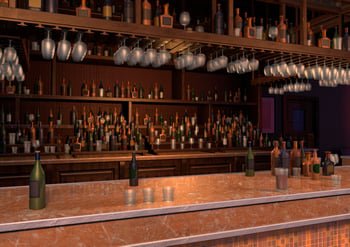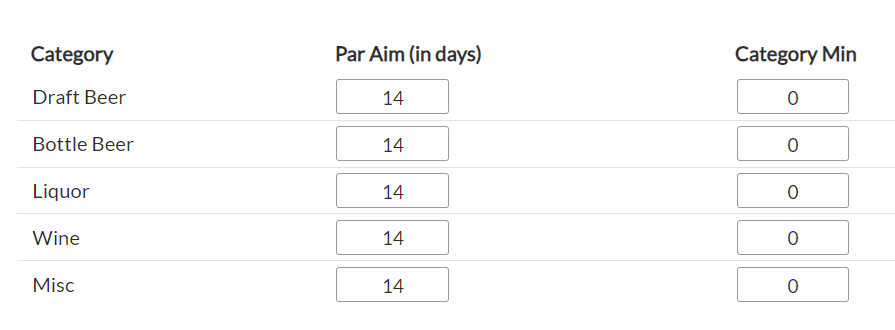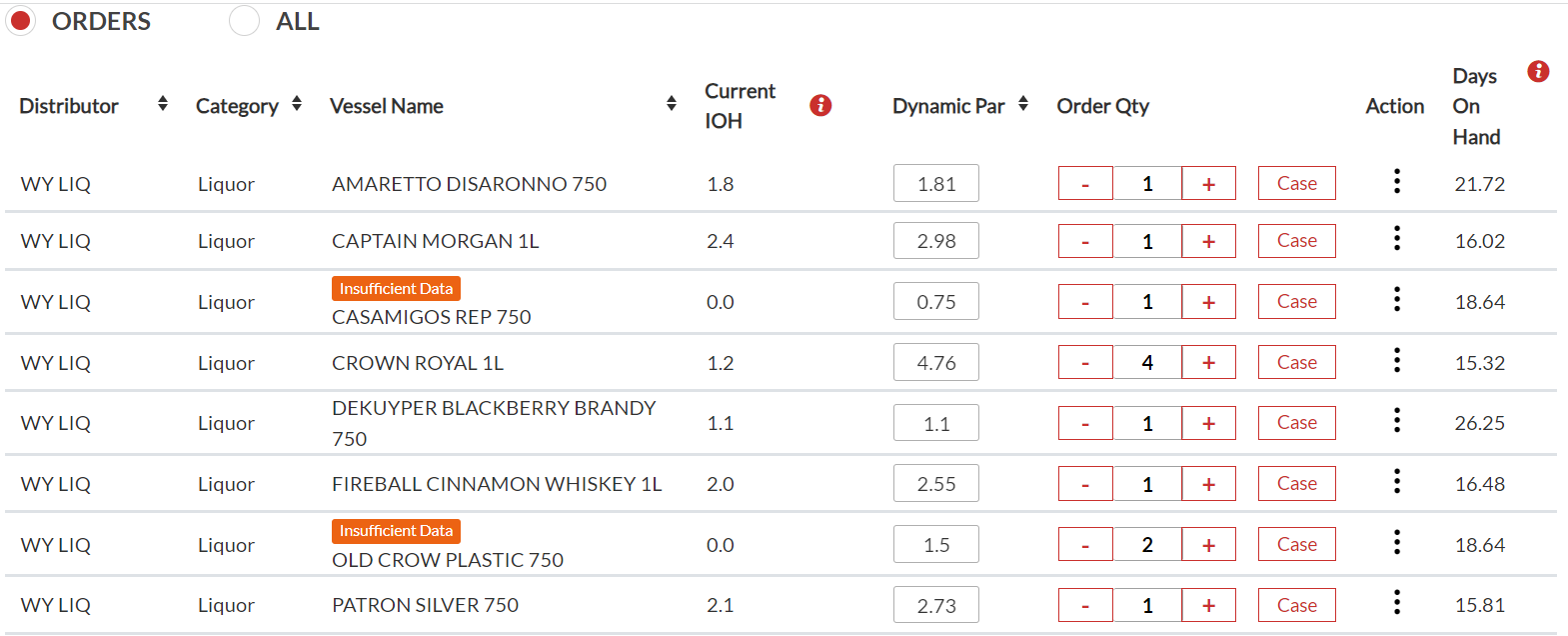 At Bar-i, we’ve performed over 30,000 bar inventory audits in over 40 states during the last 15 years, and this broad experience has given us a good look at the way most bars do their ordering. Quite simply, most bars don’t do a great job managing this aspect of their business. When we start working with a new bar or restaurant, we typically find that they tend to overorder. In some instances, we also see bars run out of products, and we consistently see bars carry too many products.
At Bar-i, we’ve performed over 30,000 bar inventory audits in over 40 states during the last 15 years, and this broad experience has given us a good look at the way most bars do their ordering. Quite simply, most bars don’t do a great job managing this aspect of their business. When we start working with a new bar or restaurant, we typically find that they tend to overorder. In some instances, we also see bars run out of products, and we consistently see bars carry too many products.
The good news is using a good bar inventory system can solve all three of these problems. The key to getting your ordering right is to leverage data to make intelligent decisions. When you upgrade to advanced inventory software, you receive highly detailed data that can help improve the accuracy and effectiveness of your ordering.
In our experience, we’ve found that many bars experiencing problems with ordering aren’t using software to run their inventory counts and as a result, they lack the data necessary to address their ordering issues. Once you begin using software to perform your inventory counts, you’ll have the data you need to improve the accuracy of your ordering.
Solutions for the Most Common Ordering Problems
As we mentioned earlier, bars typically experience three common problems with their ordering:
- Overordering
- Running out of product
- Carrying too many products
Let’s examine the best way to address each of these issues. In all three cases, using the right inventory software makes implementing the solution much easier.
How to Avoid Overordering
One of the most common reasons why bars overorder is that they don’t base their ordering on objective data. Instead, they place orders based on their sense of what they go through each week. When you’re making a guess based on what you think you use, you’re almost always going to end up overordering.
The best solution to avoid this issue is to base your orders on dynamic pars. This allows you to set pars for every product based on your average weekly usage data. In order to effectively use dynamic pars, you need to know two pieces of information:
- How much of each product you normally go through during each inventory period
- How much of that product you have on hand today
When you use inventory software, it will provide you with the data regarding what you normally go through for each product. You can then compare this amount to what you currently have after your most recent count to determine how much to order.
Keep in mind that not all inventory software provides the highly accurate data you need to get your ordering right. Errors are inevitable during the inventory process and if your inventory system doesn’t have a built-in process to identify and resolve these errors, then your ordering will occasionally be based off errors. This may cause you to overorder or underorder any products where an error occurred in the counting process.
Bar-I’s inventory system has a dedicated error resolution process that helps you find these errors and correct them in real time to provide the accurate data you need to get your ordering right.
How to Avoid Running Out of Products
In our experience, we’ve found that overordering is a much more common problem than running out of products. When bars run out of a product, it typically occurs due to unexpected spikes in usage of a product that is poured irregularly.
The risk of this issue is much greater when you don’t count regularly enough. If you only perform inventory counts once or twice a month, it increases the likelihood that you won’t catch one of these unexpected spikes in usage in time to reorder before you run out. Therefore, the best way to avoid running out of products is to count your inventory every week. This allows you to regularly check how much you have for each product, including those used infrequently, and make sure you know that these items have dipped below the amount identified by your dynamic pars.
How to Avoid Carrying Too Many Products
 We regularly see bars carrying more products than they need to. It’s important to remember that your sales aren’t based on the number of products you carry. We’ve worked with many high-volume bars that generate these sales with a streamlined product mix. Furthermore, there are several problems that occur when you carry too many products:
We regularly see bars carrying more products than they need to. It’s important to remember that your sales aren’t based on the number of products you carry. We’ve worked with many high-volume bars that generate these sales with a streamlined product mix. Furthermore, there are several problems that occur when you carry too many products:
- It complicates your processes
- It reduces your buying leverage
The best way to streamline your product mix when you’re carrying too many products is to develop a system for identifying dead stock and combining it with a method for flagging products that should be removed from your selection.
To identify dead stock, look at your dynamic pars to see which items have a low par number. Then, evaluate each of these products to determine whether you actually need to carry that item. In some instances, you may decide there’s value in carrying these items. For example, it’s often beneficial to carry a couple of very high-end whiskeys so that when a high roller comes into the bar and wants to spend a lot of money on good whiskey, you have something to offer them. If you choose not to carry any high-end whiskeys, you’re leaving a lot of money on the table when these customers visit your bar.
However, you’ll likely find that most of the items with low dynamic pars aren’t worth carrying at your bar. A good example would be the crème de menthe that was ordered for a special Christmas drink and then takes up space in your storeroom for the rest of the year. These items don’t need to be reordered, and it’s also in your best interest to come up with creative ways to use up this dead stock so that you can replace these items in your storeroom with products that you sell regularly.
Often, these dead stock items are reordered by mistake or simply kept on your order list by your distributor. When you identify dead stock items, it’s important to make sure they don’t get reordered. The best way ensure they don’t get reordered is to diligently check in all orders and when you see an item you didn’t intend to reorder, contact your distributor right away to correct the issue.
Bar-i’s inventory software gives you the ability to flag items that you don’t want to reorder and they will automatically be removed from future orders. This system makes it easy to eliminate the items you shouldn’t be carrying. Once you identify a dead stock item, it will never be included on your orders again unless you specifically add it for a special reason, such as when you need a few extra bottles of that crème de menthe for that Christmas drink next year.
How to Objectively Assess if You Have the Right Amount of Stock
We’ve found that the well-run bars we work with don’t have more than four weeks of inventory on hand at any given time. This tends to provide the sweet spot that ensures you never run out of products while preventing you from tying up too much money in unnecessary inventory that will just collect dust in your storeroom.
Determining this amount is pretty straightforward. If your weekly sales are $100,000 and your liquor cost is 25%, it means you use $25,000 of liquor each week. Multiply this dollar amount by 4 to get your four-week figure. In this example, you shouldn’t have more than $100,000 of inventory on hand at any given time.
Keep in mind that there is one main exception to this four-weeks-on-hand rule. If you get case discounts, it may be worthwhile to buy the entire case to get the better deal. However, these case discounts should always be evaluated because it won’t be worth buying a full case of every product to get that discount. You may want to buy cases of your high-volume products since you’ll go through them quickly enough, but buying cases of low-volume products just to get a discount usually isn’t worthwhile since you’ll be stuck with a lot of unused backstock that will take up room in your storage area.
Bar-i’s Dynamic Pars Can Fix Your Ordering Issues
When you use Bar-i’s inventory software, you’ll benefit from a dynamic par system that improves the accuracy of your ordering and ensures you always have the correct amount of each product on hand at all times. Here’s how our dynamic par system works:
- The system learns from the past five audit cycles and gives you an average usage per day of each product you carry.
- You then choose how many days’ worth of product you need on hand – our default is 14 days.
- The system calculates the total usage for the days you set in step 2 to establish your dynamic par for each product. The system then compares the dynamic par to the current inventory on hand level for each product after every count. If a product is below that level, the system recommends the amount you need to order to get back to the level established by your dynamic pars.
- Automatically submit your orders via email. Always check with your distributors and make sure they’ll accept email orders. You should also do a test when setting up your first order. Implementing email orders allows you to reduce the number of meetings you have with each distributor. Instead of meeting weekly to go over your orders, you’ll be able to limit these meetings based on actual need.

How Do I Determine How Many Days of Inventory to Use for My Dynamic Pars?
Earlier, we mentioned keeping four weeks of inventory on hand as a target that shouldn’t be exceeded. But we also said that our default dynamic pars are set to having two weeks of inventory on hand. You may be wondering why these numbers are different.
Four weeks of inventory on hand is the maximum you should ever have, but we typically find that most bars don’t even need this much. If you’re counting inventory weekly and submitting orders every week, having as much on hand has you typically go through in twice that amount of time should be sufficient. This is why we set our default at 14 days for establishing dynamic pars.
Keep in mind this two-week setting is just a guide. You should adjust this number as needed based on your bar’s specific usage to ensure you avoid running out of products if an unexpected spike in usage occurs. We recommend that you compare what you’ve previously ordered with our suggestions to ensure you choose the most accurate number of days you need on hand.
Bar-i’s Dynamic Pars Can Help You Identify Dead Stock
Our dynamic par system is also an effective way to identify dead stock items that can be eliminated from your product mix. In general, if you’re using less than half a bottle of a product every two weeks, we recommend questioning whether you need to carry that product at all. This will help you eliminate items that aren’t selling well so you can streamline your product mix.

Benefits of Using Bar-i’s Inventory System to Manage Your Ordering
You’ll experience a variety of benefits when you manage your ordering with Bar-i’s inventory system and dynamic par functionality:
- You won’t run out of products
- Inventory counts will go faster
- Easier to achieve level 3 inventory
- You’ll free up working capital
- You won’t waste time looking for items during shifts
- Staff product knowledge will improve
You Won’t Run Out of Products
You can be confident that you’ll always have enough product on hand to prevent running out of items. This helps you avoid upsetting customers when you don’t have the drink they ask for. It also eliminates service delays that occur when you have to go back to customers to tell them you’re out of their drink and ask them for an alternate drink order. These service delays can cost you a lot of money in sales on a busy night if your bartenders aren’t able to crank out drink orders as fast as they can when you’re fully stocked.

Inventory Counts Will Go Faster
If you have less products to count and less on hand of every product, your weekly inventory counts will go faster. This frees up time for your managers to focus on other important tasks associated with running your bar.
Easier to Achieve Level 3 Inventory
Fewer products and less quantity of each product to count will typically reduce the number of errors that occur during your counts. This will make it easier to achieve the accurate data necessary for level 3 inventory, which compares how much you used vs. sold for every product in your bar. Level 3 inventory is a critical way to reduce shrinkage and use your inventory efforts to maximize profits.
You’ll Free Up Working Capital
If you have way too much inventory on hand, it ties up a lot of your money in products that won’t be sold for a really long time. This is valuable money that can be used to invest in other items necessary to run your bar effectively. We’ve seen bars that order effectively free up $10,000 or more, which can be very significant in running your operations.
You Won’t Waste Time Looking for Items During Shifts
Carrying fewer items will make it easier to organize your bar – both behind the bar and in your storage areas. This will help your bartenders maintain your organizational plan over time and make it easier for them to find what they need during busy shifts since bottles are more likely to be in the right place.
Staff Product Knowledge Will Improve
When you carry fewer items, it’s easier to provide your staff with training to educate them on the products you carry. This will make your staff more knowledgeable about the items you serve, allowing them to provide a better experience to your customers.
If you would like to learn more about how Bar-i’s liquor inventory system can help streamline your processes and maximize your profitability, please contact us today to schedule a free consultation. We serve clients nationwide from our offices in Denver, Colorado.


-1.png)